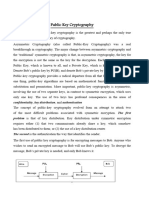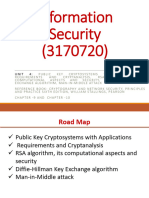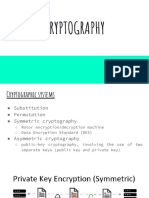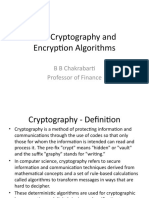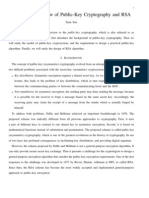0% found this document useful (0 votes)
11 views3 pagesPublic Key Encryption-Invert
Public key cryptography is a secure communication method using a pair of keys: a public key for encryption and a private key for decryption. It ensures confidentiality, authentication, and data integrity in digital communications. Key applications include encryption/decryption, digital signatures, and secure key exchange.
Uploaded by
ramesh yadavCopyright
© © All Rights Reserved
We take content rights seriously. If you suspect this is your content, claim it here.
Available Formats
Download as PDF, TXT or read online on Scribd
0% found this document useful (0 votes)
11 views3 pagesPublic Key Encryption-Invert
Public key cryptography is a secure communication method using a pair of keys: a public key for encryption and a private key for decryption. It ensures confidentiality, authentication, and data integrity in digital communications. Key applications include encryption/decryption, digital signatures, and secure key exchange.
Uploaded by
ramesh yadavCopyright
© © All Rights Reserved
We take content rights seriously. If you suspect this is your content, claim it here.
Available Formats
Download as PDF, TXT or read online on Scribd
/ 3
